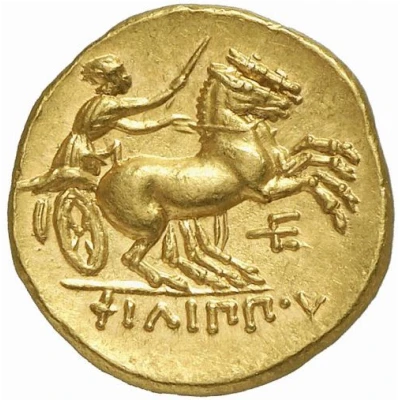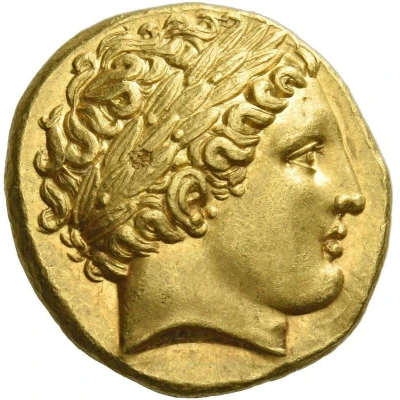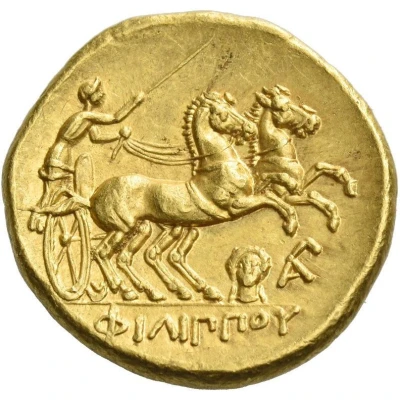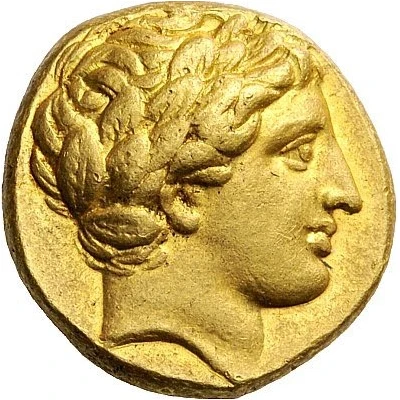
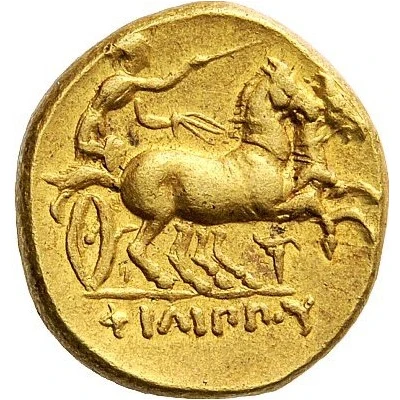

© Nomos AG
Stater In the name of Philip II; Amphipolis 323 BC - 315 BC
| Gold | 8.62 g | - |
| Issuer | Kingdom of Macedonia |
|---|---|
| King | Philip III Arrhidaeus (323 BC - 317 BC) Alexander IV (323 BC - 310 BC) |
| Regent | Cassander (317 BC - 305 BC) |
| Type | Standard circulation coin |
| Years | 323 BC - 315 BC |
| Value | Gold Stater (20) |
| Currency | Drachm |
| Composition | Gold |
| Weight | 8.62 g |
| Shape | Round (irregular) |
| Technique | Hammered |
| Orientation | Variable alignment ↺ |
| Demonetized | Yes |
| Updated | 2024-10-10 |
| Numista | N#182068 |
|---|---|
| Rarity index | 100% |
Reverse
Charioteer driving galloping biga to right. Below, bucranium with one horn up and one down
Script: Greek
Lettering: ΦΙΛΙΠΠΟΥ
Translation: Philip (II)
Interesting fact
The Stater coin was minted during the reign of Philip II of Macedon, who was the father of Alexander the Great. The coin features an image of Zeus on one side and Philip II on the other, signifying the king's divine right to rule. The coin was used as a form of currency throughout the kingdom and was valued for its gold content, which was a symbol of wealth and power. It's interesting to note that the coin was minted during a time of great expansion and prosperity for the Kingdom of Macedonia, as Philip II was known for his military conquests and territorial expansion. The coin is a tangible reminder of the rich history and cultural heritage of ancient Macedonia.

